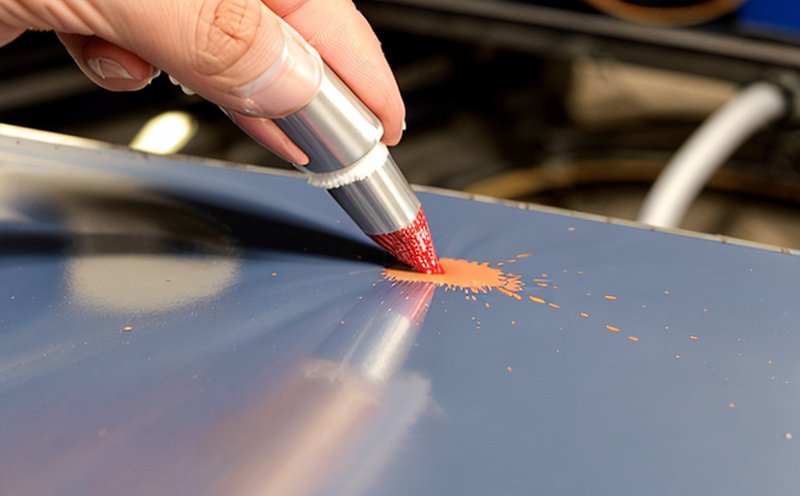ISO 16474 Accelerated Weathering UV Exposure of Laminates and Varnish Surfaces Testing
The ISO 16474 standard is a cornerstone in the evaluation of surface coatings and finishes on laminates, providing a robust framework for accelerated weathering testing under ultraviolet (UV) exposure. This method simulates the aging effects that surfaces might experience over extended periods due to environmental factors such as sunlight, humidity, and temperature variations.
The primary goal of this test is to assess the durability and resistance of surface coatings against UV radiation, which can lead to discoloration, cracking, or loss of adhesion. The standard offers a controlled environment that replicates real-world conditions at an accelerated rate, allowing manufacturers to predict long-term performance more accurately.
The testing process involves exposing coated or laminated samples under artificial UV light sources for specific durations and intensity levels. This exposure simulates the effects of natural sunlight over many years within just a few days or weeks. The test is particularly crucial in sectors like furniture, automotive, electronics, and architectural coatings where surface integrity is critical.
The standard outlines detailed procedures to ensure consistency and accuracy, including precise control parameters such as temperature, humidity, and the type of UV radiation used. This ensures that the results are reliable and comparable across different laboratories and manufacturers.
Sample preparation is a critical step in this testing process. The samples must be cut into standardized dimensions for accurate exposure to the UV light source. The surface finish should also be cleaned meticulously before testing begins, ensuring no external factors influence the outcome.
The equipment used for ISO 16474 testing includes specialized UV curing chambers or weathering testers that can maintain precise temperature and humidity levels during the test. These chambers are designed to replicate real-world conditions while providing the controlled environment needed for accurate testing.
Upon completion of the exposure period, samples are visually inspected for any signs of degradation such as discoloration, cracking, or loss of adhesion. Additionally, instrumental methods like colorimeters and spectrophotometers may be used to quantify changes in surface properties accurately.
The results from this testing provide valuable insights into the lifespan and performance of coatings under UV exposure. This information is essential for quality managers, compliance officers, R&D engineers, and procurement teams looking to improve product longevity and meet regulatory standards.
Industry Applications
| Industry Sector | Description of Application |
|---|---|
| Furniture Manufacturing | Evaluating the durability and resistance of wood finishes to UV radiation. |
| Automotive Industry | Assessing the longevity of paint and varnish on car bodies under simulated sunlight conditions. |
| Electronics Manufacturing | Determining the stability of electronic components coated with protective layers exposed to UV light. |
| Aerospace and Defense | Evaluating the performance of coatings on aircraft parts under extreme weather conditions, including UV exposure. |
Quality and Reliability Assurance
The ISO 16474 standard plays a vital role in ensuring the quality and reliability of surface coatings used across various industries. By providing a standardized method for accelerated weathering testing, it helps manufacturers identify potential issues early on, allowing for corrective actions to be taken before products reach the market.
Quality managers can use this test to ensure that their products meet both internal standards and external regulatory requirements. Compliance officers benefit from having reliable data to prove adherence to industry norms. R&D engineers gain valuable insights into material behavior under simulated UV exposure, which can lead to innovations in coating technology.
The standard is also crucial for procurement teams as it allows them to specify the quality criteria for surface coatings they purchase. This ensures that suppliers meet the necessary standards and reduces the risk of substandard materials being used in manufacturing processes.
International Acceptance and Recognition
- The ISO standard is widely recognized by regulatory bodies worldwide, including the European Commission (EC).
- It is referenced in national standards such as ASTM D6453-19 for US markets.
- Australian Standards AS 1208.2 also incorporate this test method.
- The standard is accepted by the International Electrotechnical Commission (IEC).





